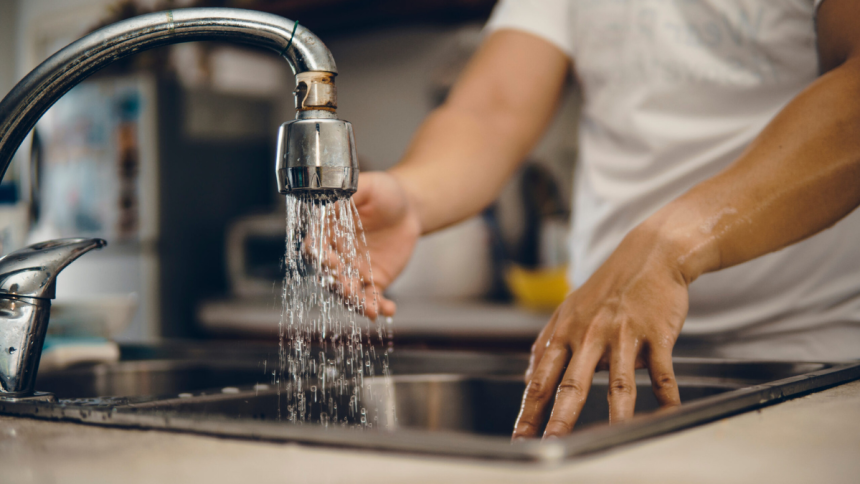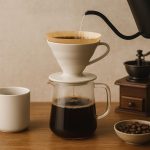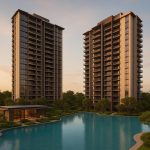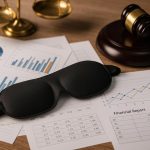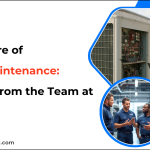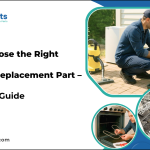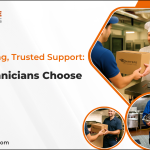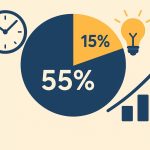In the environmentally conscious and cost-sensitive hospitality landscape, water efficiency has emerged as a critical operational consideration. For hotels and restaurants across the UK, water usage represents both a significant expense and an environmental responsibility. At EnviroFWA, we recognise that optimising water systems presents one of the most impactful opportunities for hospitality businesses to reduce operational costs whilst enhancing sustainability credentials.
The hospitality industry is particularly water-intensive, with hotels using an average of 200-400 litres per guest night and restaurants consuming 20-40 litres per meal served. With water and sewerage charges continuing to rise across the UK, implementing comprehensive water efficiency measures has never been more financially prudent.
This guide explores practical strategies for assessing, optimising, and maintaining water systems in hospitality settings, delivering both immediate and long-term benefits to your business and the environment.
Understanding Water Consumption in Hospitality Settings
Before implementing efficiency measures, it’s essential to understand where and how water is typically used in hospitality environments:
Typical Water Usage Distribution in Hotels
- Guest rooms (showers, toilets, baths): 30-40% of consumption
- Food and beverage operations: 25-35%
- Laundry services: 15-20%
- Swimming pools and spas: 10-15%
- Cooling towers and HVAC systems: 5-10%
- Irrigation and landscaping: 5-10%
Typical Water Usage in Restaurants
- Kitchen operations: 50-60% of consumption
- Dishwashing: 25-35%
- Customer restrooms: 10-15%
- Cleaning and maintenance: 5-10%
This distribution highlights priority areas for efficiency improvements, with the greatest opportunities typically found in guest amenities, kitchen operations, and mechanical systems.
Water Usage Audit: The Foundation of Efficiency
A comprehensive water audit provides the essential baseline for identifying efficiency opportunities.
Conducting an Effective Water Audit
1. Consumption Analysis
- Review 12-24 months of water bills to identify trends and anomalies
- Benchmark usage against industry standards (litres per guest night or per meal served)
- Identify seasonal variations and demand patterns
2. System Inventory
- Document all water-consuming equipment and fixtures
- Record flow rates, flush volumes, and operating specifications
- Note age and condition of all equipment
3. Leak Detection and Assessment
- Conduct overnight flow monitoring to identify hidden leaks
- Assess pipe infrastructure for inefficiencies
- Inspect visible plumbing components for drips and leaks
4. Operational Review
- Evaluate current water-related procedures and practices
- Interview staff about water usage patterns
- Review maintenance schedules for water-consuming equipment
5. Analysis and Prioritisation
- Calculate consumption and cost by department or usage area
- Identify high-impact improvement opportunities
- Develop prioritised action plan based on cost-benefit analysis
Our water sampling services can be integrated with water auditing to ensure efficiency improvements and maintain water quality standards.
Guest Room Water Efficiency Strategies
Guest rooms typically represent the largest water consumption area in hotels, offering significant efficiency opportunities.
Bathroom Fixture Optimisation
Showerhead Upgrades
Modern low-flow showerheads deliver substantial savings without compromising guest experience:
- Traditional showerheads: 12-18 litres per minute
- Low-flow aerating showerheads: 6-8 litres per minute
- High-efficiency models: 4-6 litres per minute
The best models use air infusion technology to maintain a strong pressure sensation despite reduced water flow.
WC Efficiency
Toilet upgrades can yield substantial savings:
- Older WCs: 9-13 litres per flush
- Standard modern WCs: 6 litres per flush
- Dual-flush models: 6/4 litres for full/reduced flush
- High-efficiency models: 4.5/3 litres for full/reduced flush
For existing toilets, installing displacement devices in cisterns can reduce water volume without replacement costs.
Tap Aerators and Flow Restrictors
- Install aerators on all bathroom taps (typical reduction: 4-8 litres per minute)
- Consider tap sensors in high-traffic properties
- Ensure pressure is properly regulated to prevent excessive flow
Case Study: Coastal Hotel, County Down
A 78-room coastal hotel implemented targeted guest room water efficiency measures:
- Installation of aerating showerheads (7.5 litres per minute)
- Dual-flush WC converters for existing toilets
- Tap aerators in all bathrooms
- Pressure reduction valves to stabilise water pressure
Results:
- 32% reduction in guest room water consumption
- Annual water and sewerage cost savings of £11,200
- Implementation cost recouped in under 9 months
- No negative impact on guest satisfaction scores
Kitchen and Food Service Efficiency Improvements
Food service operations present unique water efficiency opportunities due to their high-intensity equipment and processes.
Commercial Kitchen Equipment Selection
Dishwashers
- Tunnel washers: Should use <2 litres per rack
- Under-counter models: Should use <3 litres per cycle
- Features to prioritise: Soil sensors, rinse water recycling, load-sensing technology
Pre-rinse Spray Valves
- Replace conventional sprayers (15-20 litres per minute) with high-efficiency models (6-8 litres per minute)
- Ensure proper pressure for effective cleaning with minimal water
- Consider models with automatic shut-off
Food Steamers
- Conventional steamers: 40-60 litres per hour
- ENERGY STAR rated models: 10-15 litres per hour
- Connectionless steamers: Use 90% less water than conventional models
Ice Machines
- Air-cooled vs. water-cooled: Air-cooled machines use no water for cooling
- Efficiency specifications: Seek models using <15 litres per 10kg of ice
- Proper sizing: Match capacity to actual peak demand
Our air conditioning and refrigeration expertise includes assessment of water-cooled systems for efficiency optimisation.
Operational Best Practices
Beyond equipment selection, operational procedures significantly impact water consumption:
- Implement full-load-only practices for dishwashers and washing machines
- Develop standard operating procedures for thawing, washing and cleaning
- Train staff on water-efficient food preparation techniques
- Install foot pedal-operated taps at preparation stations
- Establish cleaning protocols that minimise water use without compromising hygiene
Integrating these practices with our planned maintenance approach ensures continuous efficiency improvements.
Laundry Operations: Efficiency Without Compromise
For hotels with on-premise laundry, this operation often represents the third-largest water consumption area.
Equipment Considerations
- High-efficiency washing machines: Front-loading models use 30-50% less water
- Tunnel washers: For larger operations, these can reduce water use by up to 60%
- Ozone laundry systems: Can reduce water consumption by 30% and hot water usage by 95%
- Water recycling systems: Grey water recovery for pre-wash cycles
Operational Improvements
- Optimise load weight: Running at 90-100% capacity maximises efficiency
- Revise wash cycles: Eliminate unnecessary rinse cycles where possible
- Linen reuse programmes: Implement opt-in programmes for multi-night guests
- Staff training: Ensure proper machine loading and cycle selection
- Preventive maintenance: Regular servicing to maintain optimal performance
Mechanical Systems and Infrastructure
Beyond direct-use applications, significant water consumption occurs in building mechanical systems.
Cooling Tower Optimisation
Cooling towers supporting air conditioning systems can consume substantial water through evaporation and bleed-off:
- Conductivity controllers: Optimise bleed-off based on actual water quality
- Drift eliminators: Reduce water loss through evaporation
- Side-stream filtration: Extend cycles of concentration, reducing freshwater needs
- Alternative water sources: Use harvested rainwater or treated greywater for make-up
Swimming Pools and Spas
For properties with water features, efficiency measures include:
- Pool covers: Reduce evaporation losses by 30-50%
- Filter backwash optimisation: Backwash only when necessary based on pressure differential
- Leak detection systems: Monitor for unexplained water loss
- Advanced water treatment: Reduce water replacement requirements
Water Distribution System Maintenance
Infrastructure efficiency is often overlooked but critical:
- Pressure regulation: Maintain 2.5-3 bar pressure to prevent excessive flow
- Pipe insulation: Reduce wait time for hot water delivery
- Regular leak audits: Systematic testing for hidden leaks
- Infrastructure upgrades: Replace ageing pipes prone to leaks
Our water tank cleaning service ensures water storage systems remain efficient and hygienic, preventing contamination issues that could necessitate system flushing and water wastage.
Alternative Water Sources and Recycling Systems
Beyond efficiency improvements, alternative water sourcing represents the next frontier in hospitality water management.
Rainwater Harvesting
Collecting rainfall from rooftops can provide water for non-potable applications:
- Typical applications: Toilet flushing, irrigation, cooling tower make-up
- System components: Collection surfaces, filtration, storage, pumping
- ROI considerations: Most viable in areas with high rainfall and water costs
- Maintenance requirements: Regular cleaning of filters and storage tanks
Greywater Recycling
Reusing lightly contaminated wastewater from baths, showers, and handwashing:
- Treatment methods: Filtration, biological treatment, disinfection
- Common applications: Toilet flushing, irrigation, cooling towers
- Implementation considerations: Separate plumbing systems, treatment space, and regulatory compliance
- Water savings potential: 30-50% reduction in freshwater demand
EnviroFWA can help assess the feasibility of these alternative water systems for your specific property.
Water-Efficient Technology Integration
Modern technology offers new approaches to water management that move beyond simple conservation.
Smart Water Management Systems
- Submetering: Real-time consumption monitoring by department or usage area
- Leak detection technology: Continuous flow monitoring with alert capabilities
- Pressure management: Dynamic adjustment based on demand patterns
- Consumption analytics: Identifying trends and abnormalities through data analysis
Guest Room Technology
- Occupancy-based controls: Systems that reduce water flow in unoccupied rooms
- Smart shower technology: Digital temperature controls that eliminate adjustment waste
- Feedback displays: Real-time shower duration and consumption information
- Leak detection systems: Sensors that identify unusual flow patterns
Kitchen and Laundry Innovation
- Process water recycling: Capturing and treating water for reuse within processes
- Sensor-based controls: Automated systems that optimise water use in real-time
- Waterless equipment alternatives: New technologies that eliminate water from certain processes
Staff Engagement and Training
The human element remains critical to water efficiency success.
Creating a Water-Conscious Culture
- Staff education programmes: Training on the importance of water conservation
- Department-specific guidance: Tailored training for housekeeping, kitchen, and maintenance
- Visual reminders: Signage in key water usage areas
- Incentive programmes: Recognition for departments achieving efficiency targets
- Regular feedback: Sharing consumption data and improvement results
Guest Communication Strategies
- Subtle messaging: Tasteful communication of water conservation efforts
- Participation opportunities: Optional towel and linen reuse programmes
- Recognition programmes: Acknowledging guest participation in conservation efforts
- Transparency: Sharing conservation achievements and goals
Implementation Strategy and ROI Expectations
A systematic approach to water efficiency implementation maximises results.
Phased Implementation Approach
- No/low-cost operational improvements: Immediate policy and procedure changes
- Fixture and fitting upgrades: Aerators, flow restrictors, efficient showerheads
- Equipment replacement: Scheduled replacement with high-efficiency alternatives
- System redesign: Larger infrastructure improvements and recycling systems
- Alternative water sourcing: Rainwater harvesting and greywater systems
ROI Considerations for Water Efficiency Investments
Return on investment varies by measure:
| Efficiency Measure | Typical Payback Period | Lifetime Savings Ratio |
| Aerators and flow restrictors | 1-3 months | 60-80× investment |
| Low-flow showerheads | 3-6 months | 40-50× investment |
| Efficient pre-rinse spray valves | 1-2 months | 90-100× investment |
| Dual-flush WC converters | 6-12 months | 15-20× investment |
| High-efficiency dishwashers | 1-3 years | 7-10× investment |
| Laundry water recycling | 2-4 years | 5-8× investment |
| Rainwater harvesting | 4-7 years | 3-5× investment |
Monitoring and Verification
Post-implementation measurement ensures projected savings are achieved:
- Regular meter reading: At least weekly monitoring of consumption
- Submetering data analysis: Department-level performance tracking
- Adjustment and optimisation: Fine-tuning systems based on performance data
- Staff feedback collection: Identifying practical challenges with new systems
Our planned maintenance programmes include verification of water efficiency measures to ensure continued performance.
Regulatory Compliance and Certification
Water efficiency increasingly affects compliance and certification requirements.
UK Water Regulations
- Water Supply (Water Fittings) Regulations 1999: Sets requirements for water system design and components
- Building Regulations Part G: Establishes water efficiency standards for new buildings
- Regulatory enforcement: Increasing focus on water efficiency by regulatory bodies
Certification Programmes
Water efficiency can support broader sustainability certification:
- BREEAM: Water efficiency credits within assessment methodology
- Green Tourism Business Scheme: Water management criteria
- International Tourism Partnership: Water stewardship commitments
Water Efficiency as a Strategic Investment
Implementing comprehensive water efficiency measures represents not merely an environmental initiative but a strategic business investment. With potential reductions of 30-50% in water consumption achievable through systematic implementation of the strategies outlined in this guide, hospitality businesses can realise significant operational cost savings while enhancing their sustainability credentials.
At EnviroFWA, our integrated approach to water system management encompasses auditing, implementation, and ongoing maintenance. From water sampling and legionella risk assessment to water tank cleaning and remedial works, our services ensure your water systems deliver optimal efficiency while maintaining safety and quality.
Contact our team today to discuss how we can help transform your hospitality business’s approach to water management, reducing costs while contributing to environmental sustainability.
Lynn Martelli is an editor at Readability. She received her MFA in Creative Writing from Antioch University and has worked as an editor for over 10 years. Lynn has edited a wide variety of books, including fiction, non-fiction, memoirs, and more. In her free time, Lynn enjoys reading, writing, and spending time with her family and friends.


